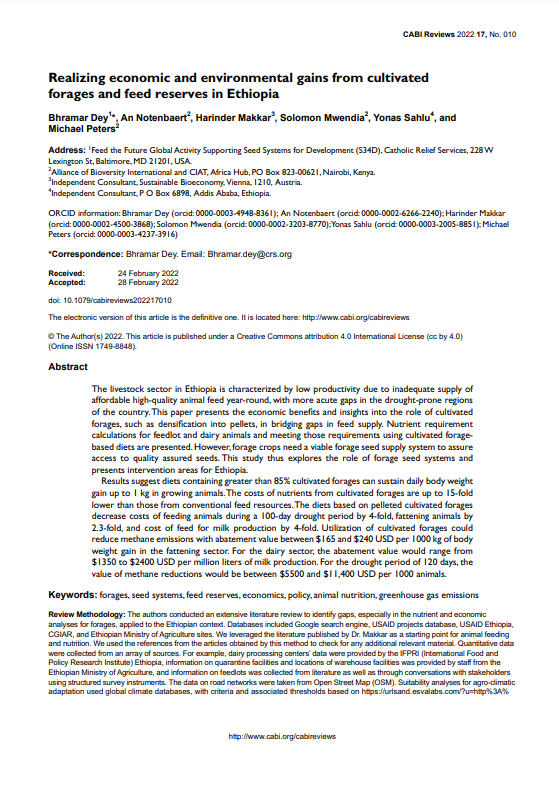The livestock sector in Ethiopia is characterized by low productivity due to inadequate supply of affordable high-quality animal feed year-round, with more acute gaps in the drought-prone regions of the country. This paper presents the economic benefits and insights into the role of cultivated forages, such as densification into pellets, in bridging gaps in feed supply. Nutrient requirement calculations for feedlot and dairy animals and meeting those requirements using cultivated forage-based diets are presented. However, forage crops need a viable forage seed supply system to assure access to quality assured seeds.
This study thus explores the role of forage seed systems and presents intervention areas for Ethiopia.Results suggest diets containing greater than 85% cultivated forages can sustain daily body weight gain up to 1 kg in growing animals. The costs of nutrients from cultivated forages are up to 15-fold lower than those from conventional feed resources. The diets based on pelleted cultivated forages decrease costs of feeding animals during a 100-day drought period by 4-fold, fattening animals by 2.3-fold, and cost of feed for milk production by 4-fold.
Utilization of cultivated forages could reduce methane emissions with abatement value between $165 and $240 USD per 1000 kg of body weight gain in the fattening sector. For the dairy sector, the abatement value would range from $1350 to $2400 USD per million liters of milk production. For the drought period of 120 days, the value of methane reductions would be between $5500 and $11,400 USD per 1000 animals.
Dey, B.; Notenbaert, A.; Makkar, H.; Mwendia, S.; Sahlu, Y.; Peters, M.

